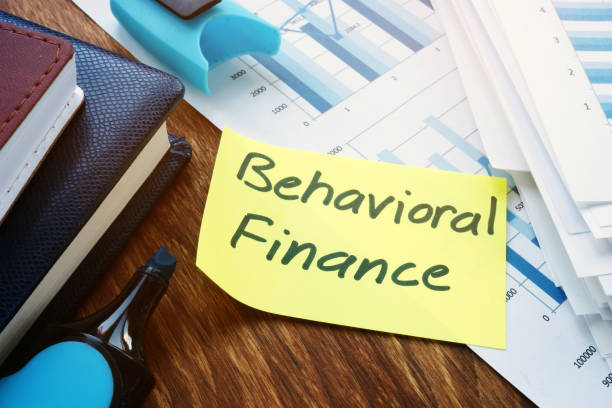
Behavioral Alpha – Gaining an Edge in Markets by Managing Investor Psychology & Emotions: Investing in financial markets is often portrayed as a game of numbers, charts, and economic indicators. While data-driven strategies are essential, they are only part of the equation. Many investors overlook a critical factor that can make or break their portfolio: human psychology. The ability to understand, manage, and exploit behavioral biases can provide a unique edge known as Behavioral Alpha.
Behavioral Alpha is the art and science of achieving superior investment returns by systematically recognizing and responding to psychological patterns—both your own and those of the broader market. Unlike traditional Alpha, which depends solely on superior analytical insights, Behavioral Alpha leverages the predictable ways humans make financial decisions. This article explores the concept in detail, helping investors gain an edge by mastering the psychological side of investing.
Understanding Behavioral Alpha
Behavioral Alpha refers to the excess return an investor can earn by systematically recognizing and exploiting behavioral biases—both in themselves and in others. It is rooted in behavioral finance, a field that combines psychology and economics to explain why people make irrational financial decisions.
Unlike traditional investment strategies that focus on valuation, market trends, or quantitative models, Behavioral Alpha capitalizes on predictable psychological patterns. For instance, if most investors panic during a market dip, a disciplined investor who understands this tendency can buy undervalued assets at a discount, gaining an edge when the market recovers.
Key Points About Behavioral Alpha:
- It relies on self-awareness and emotional discipline.
- It requires a deep understanding of market psychology.
- It is a long-term strategy, not a short-term trick.
- It complements other investment strategies, increasing the probability of consistent returns.
In essence, Behavioral Alpha is about thinking differently when others are acting on impulse, fear, or greed.
The Role of Investor Psychology
Psychology drives most market movements, often more than fundamentals. Understanding investor psychology is critical because:
- Markets are driven by human behavior: Emotions like fear and greed can lead to irrational buying and selling.
- Cognitive biases influence decisions: These biases cause investors to deviate from rational analysis.
- Behavioral patterns are repeatable: By studying past market reactions, investors can anticipate future moves.
Some famous examples of psychology-driven market events include the dot-com bubble, the 2008 financial crisis, and the cryptocurrency boom and bust cycles. In each case, investor behavior—over-optimism, panic selling, herd mentality—played a pivotal role.
Common Behavioral Biases in Investing
Behavioral biases are systematic patterns of deviation from rational judgment. Recognizing these biases is the first step to generating Behavioral Alpha. Here are some common biases:
1. Overconfidence Bias
Investors often overestimate their knowledge or predictive abilities. Overconfidence can lead to excessive trading, ignoring risk, or holding concentrated positions.
Behavioral Alpha Strategy: Maintain humility, diversify, and base decisions on data rather than intuition.
2. Loss Aversion
People feel the pain of losses more intensely than the pleasure of gains. This can cause panic selling during temporary market declines.
Behavioral Alpha Strategy: Use disciplined rules for stop-losses and portfolio rebalancing, and focus on long-term objectives.
3. Herding Behavior
Investors often follow the crowd, buying assets when prices are high and selling during downturns.
Behavioral Alpha Strategy: Adopt contrarian approaches—buy undervalued assets when the market is fearful and sell when others are euphoric.
4. Anchoring Bias
Relying too heavily on the first piece of information encountered, such as a stock’s past price, can distort judgment.
Behavioral Alpha Strategy: Reevaluate investments based on updated fundamentals and market conditions, not past prices.
5. Recency Bias
Recent events often disproportionately influence decisions, leading to overreaction to short-term trends.
Behavioral Alpha Strategy: Take a long-term perspective, focusing on underlying fundamentals rather than temporary market noise.
Emotional Management and Decision-Making
Emotions can cloud judgment, leading to impulsive decisions that erode returns. Managing emotions is central to Behavioral Alpha.
Techniques for Emotional Control:
- Mindfulness and Self-Awareness: Being aware of emotional triggers prevents reactive decisions.
- Predefined Investment Rules: Rules for buying, selling, and risk management reduce emotional interference.
- Journaling Decisions: Documenting why and how investments are made improves future decision-making.
- Stress Management: Meditation, exercise, and healthy routines reduce impulsive behaviors.
Successful investors like Warren Buffett and Ray Dalio emphasize emotional discipline as the cornerstone of long-term success.
Techniques to Harness Behavioral Alpha
Generating Behavioral Alpha requires actionable strategies. Here’s how:
1. Contrarian Investing
Buying when others are fearful and selling when others are greedy exploits herd mentality.
2. Market Sentiment Analysis
Use indicators like volatility indices (VIX) or investor sentiment surveys to gauge collective emotion and anticipate market moves.
3. Behavioral Portfolio Management
Design portfolios with rules to counteract biases. For example, rebalancing to reduce overexposure to hot sectors helps mitigate overconfidence and herding risks.
4. Scenario Planning
Anticipate potential emotional reactions to market events and prepare strategies in advance. This reduces panic-driven errors.
5. Behavioral Risk Assessment
Evaluate how personal biases and market psychology could affect risk perception and decision-making.
Behavioral Alpha vs Traditional Alpha
| Aspect | Traditional Alpha | Behavioral Alpha |
|---|---|---|
| Focus | Market fundamentals, valuation | Investor psychology and emotions |
| Source of Edge | Research, analytics | Exploiting predictable biases |
| Time Horizon | Short-term or long-term | Long-term consistency |
| Required Skillset | Quantitative, technical | Emotional intelligence, self-awareness |
| Reaction to Market | Data-driven, reactive | Contrarian, anticipatory |
While traditional alpha focuses on what the market should do, Behavioral Alpha focuses on what the market is likely to do because of human behavior. Combining both can maximize returns and minimize mistakes.
Case Studies of Behavioral Alpha in Action
1. The 2008 Financial Crisis
During the financial crisis, panic selling pushed asset prices to irrational lows. Investors who stayed calm and focused on long-term fundamentals gained substantial returns in the recovery phase.
2. Dot-Com Bubble Burst
While many investors chased technology stocks in 2000, contrarian investors identified overvalued companies and avoided losses. Behavioral Alpha strategies helped them outperform the market when the bubble burst.
3. Indian Stock Market 2020 Pandemic Crash
Fear-driven selling caused Nifty and Sensex to dip sharply. Investors who recognized the panic as temporary opportunity bought fundamentally strong stocks at discounted prices, realizing significant gains within a year.
These examples highlight how understanding psychology can create substantial long-term advantages.
The Future of Behavioral Investing
Behavioral finance is evolving with technological advancements. Artificial intelligence and machine learning now allow investors to:
- Analyze real-time sentiment from news, social media, and trading patterns.
- Identify emerging behavioral trends before they manifest in prices.
- Develop algorithmic strategies that integrate behavioral insights for automated trading.
As markets become increasingly complex, the ability to combine traditional analysis with behavioral intelligence will define the next generation of successful investors.
Conclusion
Behavioral Alpha is more than a concept—it is a practical strategy to gain an edge in financial markets. By understanding psychological biases, managing emotions, and adopting disciplined, contrarian approaches, investors can achieve superior returns while mitigating risk.
In a world dominated by data and algorithms, the human element remains critical. Investors who master Behavioral Alpha not only navigate market volatility with confidence but also capitalize on opportunities created by collective psychology.
Whether you are a retail investor, portfolio manager, or hedge fund professional, integrating behavioral insights with traditional investment strategies can transform your approach, enhance performance, and drive long-term wealth creation.





